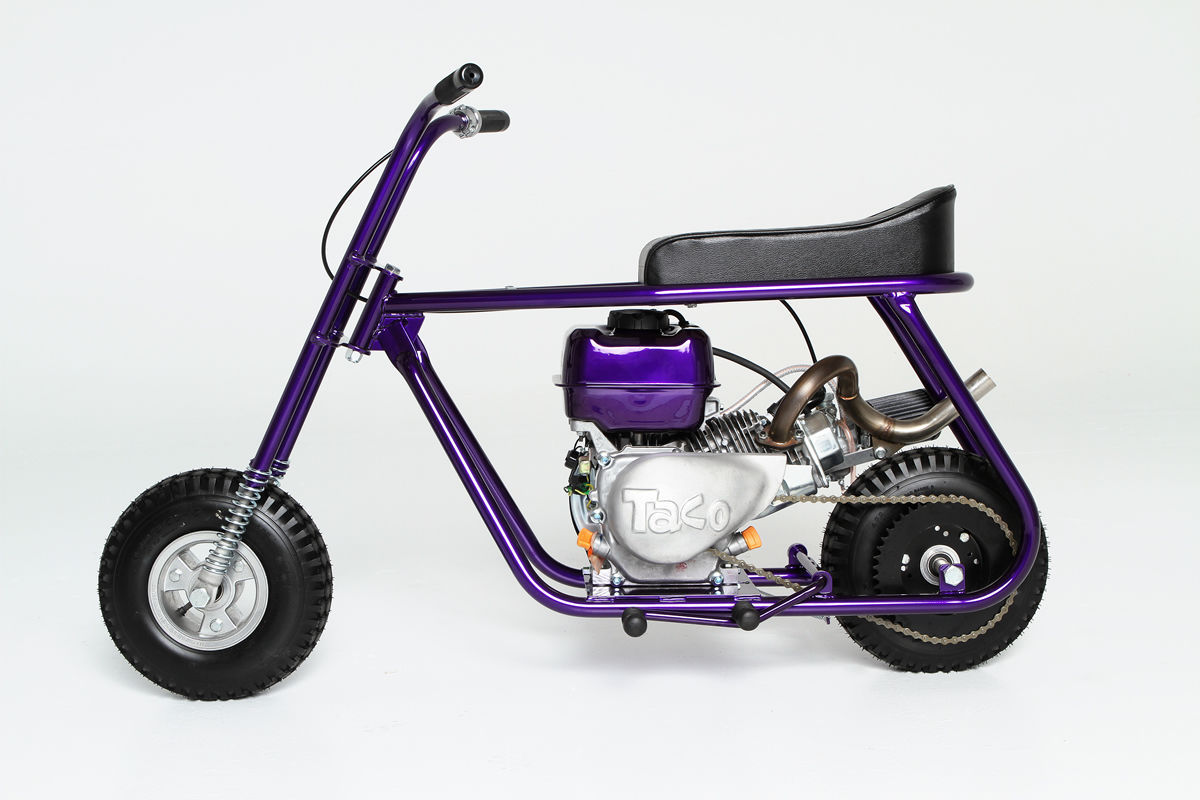

Production grew from 1993 to 2004 by an estimated 35%. Yamaha, a Japanese automotive giant built one of the early prototypes of e-bike back in 1989 and invented the pedal assist system in 1993.

Despite the Zike, in 1992 hardly any commercial e-bikes were available. The bicycle included NiCd batteries that were built into a frame member and included an 850 g permanent-magnet motor. In 1992 Vector Services Limited offered and sold an e-bike dubbed Zike. For example, Takada Yutky of Japan filed a patent in 1997 for such a device. Torque sensors and power controls were developed in the late 1990s.
CURRENT MINI BIKE KIT SERIES
Wood's device used 4 fractional horsepower motors connected through a series of gears. Schnepf's invention was later re-examined and expanded in 1969 by G.A. Patent 627,066 by John Schnepf depicted a rear-wheel friction “roller-wheel” style drive electric bicycle. Ī bike equipped with an after market electric hub motor conversion kit, with the battery pack placed on the rear carrier rackīy 1898 a rear-wheel drive electric bicycle, which used a driving belt along the outside edge of the wheel, was patented by Mathew J. Į-bikes are the electric motor-powered versions of motorized bicycles, which have been in use since the late 19th century. In UK legislation the vehicles are called EAPC or Electrically Assisted Pedal Cycle, in EU legislation EPAC or Electrically Power Assisted Cycle. E-bikes can also be defined separately and treated under distinct electric bicycle laws. This exempts them from the more stringent laws regarding the certification and operation of more powerful two-wheelers which are often classed as electric motorcycles. ĭepending on local laws, many e-bikes (e.g., pedelecs) are legally classified as bicycles rather than mopeds or motorcycles. In some markets, such as Germany as of 2013, they are gaining in popularity and taking some market share away from conventional bicycles, while in others, such as China as of 2010, they are replacing fossil fuel-powered mopeds and small motorcycles. High-powered varieties can often travel more than 45 km/h (28 mph). Both retain the ability to be pedaled by the rider and are therefore not electric motorcycles.Į-bikes use rechargeable batteries and typically travel up to 25 to 32 km/h (16 to 20 mph). pedelecs) and bikes that add a throttle, integrating moped-style functionality. Many kinds of e-bikes are available worldwide, but they generally fall into two broad categories: bikes that assist the rider's pedal-power (i.e. An electric bicycle ( e-bike, eBike, etc.) is a motorized bicycle with an integrated electric motor used to assist propulsion.


 0 kommentar(er)
0 kommentar(er)
